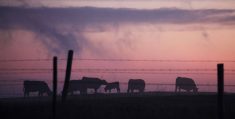A livestock specialist from Iowa says the health of calves when they arrive at a feedlot can make or break profitability
A basic rule of business is that it costs more to make a high quality product such as a Rolex, Mercedes or Dyson vacuum.
However, a cattle expert says there’s an exception to that rule: it’s possible to produce high quality beef without spending more money.
Darrell Busby, a livestock specialist with Tri-County Carcass Futurity Cooperative Research in Iowa, said research done in the state in the early 2000s and again a few years ago has demonstrated that the amount of money spent on cattle production isn’t a key factor in beef quality.
Read Also

New program aims to support plant-based exports to Asia
Understanding the preferences of consumers in Taiwan and how they differ from Indonesia or Malaysia isn’t easy for a small company in Saskatchewan.
“When we went to do the analysis… we fully expected it (quality beef) to cost more,” he said. “We re-did (the study) about four years ago and we got the same answer.”
The Iowa co-operative comprises farmers who retain ownership of cattle until slaughter.
Busby said producing quality beef is critical for farmers and feedlots because the commodity beef industry is slowly dying. Today’s meat consumers are willing to pay a premium for quality, particularly if the product can be traced back to the source and if the cattle are raised sustainably.
The co-op has worked with slaughter plants in the U.S. Midwest to keep detailed records of the cattle they ship to those plants, including data on carcass quality, yield quality and how it’s connected to production practices.
Busby, who spoke at a feedlot workshop in Brandon in late October, said marbling is the key determinant of beef quality.
He said producers and people in the cattle business often misjudge the production factors that have an influence on marbling. Many assume that breed is key, but other factors are more relevant:
- animal health
- docility
- genetics
- people
Calf health is particularly important.
Tri-County data indicates that sick animals gain less weight at the feedlot, the beef they produce is of lower quality and they are less profitable than healthy animals.
Wayne Tomlinson, a Manitoba Agriculture extension veterinarian, said the health of calves when they arrive at a feedlot can make or break feedlot profitability.
Calves bought from a known farm where animals are weaned and vaccinated are less likely to get sick and are typically strong performers at the feedlot.
Calves that are bought from different farms and mixed are more likely to become sick and perform poorly in the feedlot.
Busby said animal health and other factors that affect profitability directly affect beef quality.
“All these things that make the animal more profitable (docility, genetics, health) are also things that make the animal grade better.”
He said packers have recognized the importance of producer and feedlot practices that improve beef quality.
They will pay more for higher quality animals because they can generate more money from Prime and Choice beef. In Canada, the top grades are Prime and AAA.
“That’s why 74 percent of fed cattle sold in the United States are on some kind of premium grid, or some kind of grid system.”
Cattle sold by Tri-County members are typically priced based on a combination of quality grade and yield grade:
From April to October of last year:
- The average price (dollars per hundredweight for hot carcass weight) for Prime quality beef with yield grade three was US$263.43.
- Select grade beef with yield grade two was $231.87. Select grade is comparable to Canada AA beef.
A cattle producer attending the Brandon workshop told Busby that his buyers don’t pay based on a grid, even though his animals produce a high percentage of Prime beef.
Busby said producers should go above the middlemen and speak with someone who represents Cargill or another major processor. Companies typically will buy on a grid premium system, especially if a farmer has a history of producing high quality beef.
robert.arnason@producer.com


















